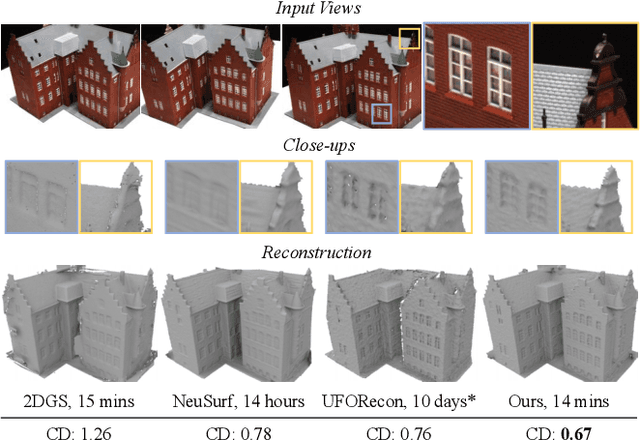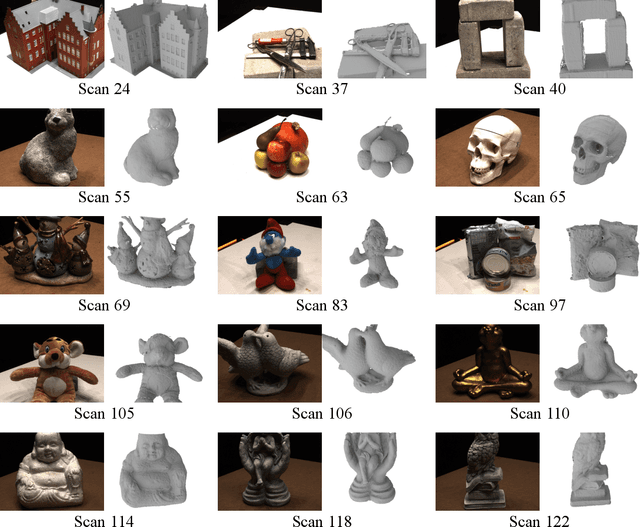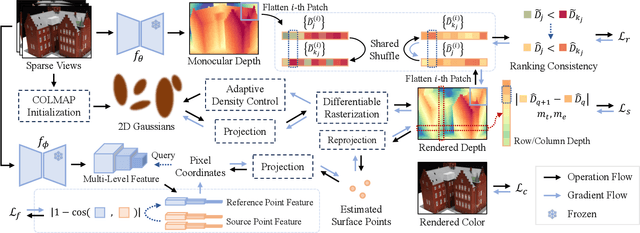Chao Deng
China Mobile Research Institute, Beijing, China
Towards Generalized Routing: Model and Agent Orchestration for Adaptive and Efficient Inference
Sep 09, 2025Abstract:The rapid advancement of large language models (LLMs) and domain-specific AI agents has greatly expanded the ecosystem of AI-powered services. User queries, however, are highly diverse and often span multiple domains and task types, resulting in a complex and heterogeneous landscape. This diversity presents a fundamental routing challenge: how to accurately direct each query to an appropriate execution unit while optimizing both performance and efficiency. To address this, we propose MoMA (Mixture of Models and Agents), a generalized routing framework that integrates both LLM and agent-based routing. Built upon a deep understanding of model and agent capabilities, MoMA effectively handles diverse queries through precise intent recognition and adaptive routing strategies, achieving an optimal balance between efficiency and cost. Specifically, we construct a detailed training dataset to profile the capabilities of various LLMs under different routing model structures, identifying the most suitable tasks for each LLM. During inference, queries are dynamically routed to the LLM with the best cost-performance efficiency. We also introduce an efficient agent selection strategy based on a context-aware state machine and dynamic masking. Experimental results demonstrate that the MoMA router offers superior cost-efficiency and scalability compared to existing approaches.
Understanding LLMs' Cross-Lingual Context Retrieval: How Good It Is And Where It Comes From
Apr 15, 2025Abstract:The ability of cross-lingual context retrieval is a fundamental aspect of cross-lingual alignment of large language models (LLMs), where the model extracts context information in one language based on requests in another language. Despite its importance in real-life applications, this ability has not been adequately investigated for state-of-the-art models. In this paper, we evaluate the cross-lingual context retrieval ability of over 40 LLMs across 12 languages to understand the source of this ability, using cross-lingual machine reading comprehension (xMRC) as a representative scenario. Our results show that several small, post-trained open LLMs show strong cross-lingual context retrieval ability, comparable to closed-source LLMs such as GPT-4o, and their estimated oracle performances greatly improve after post-training. Our interpretability analysis shows that the cross-lingual context retrieval process can be divided into two main phases: question encoding and answer retrieval, which are formed in pre-training and post-training, respectively. The phasing stability correlates with xMRC performance, and the xMRC bottleneck lies at the last model layers in the second phase, where the effect of post-training can be evidently observed. Our results also indicate that larger-scale pretraining cannot improve the xMRC performance. Instead, larger LLMs need further multilingual post-training to fully unlock their cross-lingual context retrieval potential. Our code and is available at https://github.com/NJUNLP/Cross-Lingual-Context-Retrieval
Multimodal Agricultural Agent Architecture (MA3): A New Paradigm for Intelligent Agricultural Decision-Making
Apr 07, 2025



Abstract:As a strategic pillar industry for human survival and development, modern agriculture faces dual challenges: optimizing production efficiency and achieving sustainable development. Against the backdrop of intensified climate change leading to frequent extreme weather events, the uncertainty risks in agricultural production systems are increasing exponentially. To address these challenges, this study proposes an innovative \textbf{M}ultimodal \textbf{A}gricultural \textbf{A}gent \textbf{A}rchitecture (\textbf{MA3}), which leverages cross-modal information fusion and task collaboration mechanisms to achieve intelligent agricultural decision-making. This study constructs a multimodal agricultural agent dataset encompassing five major tasks: classification, detection, Visual Question Answering (VQA), tool selection, and agent evaluation. We propose a unified backbone for sugarcane disease classification and detection tools, as well as a sugarcane disease expert model. By integrating an innovative tool selection module, we develop a multimodal agricultural agent capable of effectively performing tasks in classification, detection, and VQA. Furthermore, we introduce a multi-dimensional quantitative evaluation framework and conduct a comprehensive assessment of the entire architecture over our evaluation dataset, thereby verifying the practicality and robustness of MA3 in agricultural scenarios. This study provides new insights and methodologies for the development of agricultural agents, holding significant theoretical and practical implications. Our source code and dataset will be made publicly available upon acceptance.
Investigating and Scaling up Code-Switching for Multilingual Language Model Pre-Training
Apr 02, 2025Abstract:Large language models (LLMs) exhibit remarkable multilingual capabilities despite the extreme language imbalance in the pre-training data. In this paper, we closely examine the reasons behind this phenomenon, focusing on the pre-training corpus. We find that the existence of code-switching, alternating between different languages within a context, is key to multilingual capabilities. We conduct an analysis to investigate code-switching in the pre-training corpus, examining its presence and categorizing it into four types within two quadrants. We then assess its impact on multilingual performance. These types of code-switching data are unbalanced in proportions and demonstrate different effects on facilitating language transfer. To better explore the power of code-switching for language alignment during pre-training, we investigate the strategy of synthetic code-switching. We continuously scale up the synthetic code-switching data and observe remarkable improvements in both benchmarks and representation space. Extensive experiments indicate that incorporating synthetic code-switching data enables better language alignment and generalizes well to high, medium, and low-resource languages with pre-training corpora of varying qualities.
QG-VTC: Question-Guided Visual Token Compression in MLLMs for Efficient VQA
Apr 01, 2025Abstract:Recent advances in Multi-modal Large Language Models (MLLMs) have shown significant progress in open-world Visual Question Answering (VQA). However, integrating visual information increases the number of processed tokens, leading to higher GPU memory usage and computational overhead. Images often contain more redundant information than text, and not all visual details are pertinent to specific questions. To address these challenges, we propose QG-VTC, a novel question-guided visual token compression method for MLLM-based VQA tasks. QG-VTC employs a pretrained text encoder and a learnable feed-forward layer to embed user questions into the vision encoder's feature space then computes correlation scores between the question embeddings and visual tokens. By selecting the most relevant tokens and softly compressing others, QG-VTC ensures fine-tuned relevance to user needs. Additionally, a progressive strategy applies this compression across different vision encoder layers, gradually reducing token numbers. This approach maximizes retention of question-relevant information while discarding irrelevant details. Experimental results show that our method achieves performance on par with uncompressed models using just 1/8 of the visual tokens. The code and model will be publicly available on GitHub.
Counterfactual experience augmented off-policy reinforcement learning
Mar 18, 2025



Abstract:Reinforcement learning control algorithms face significant challenges due to out-of-distribution and inefficient exploration problems. While model-based reinforcement learning enhances the agent's reasoning and planning capabilities by constructing virtual environments, training such virtual environments can be very complex. In order to build an efficient inference model and enhance the representativeness of learning data, we propose the Counterfactual Experience Augmentation (CEA) algorithm. CEA leverages variational autoencoders to model the dynamic patterns of state transitions and introduces randomness to model non-stationarity. This approach focuses on expanding the learning data in the experience pool through counterfactual inference and performs exceptionally well in environments that follow the bisimulation assumption. Environments with bisimulation properties are usually represented by discrete observation and action spaces, we propose a sampling method based on maximum kernel density estimation entropy to extend CEA to various environments. By providing reward signals for counterfactual state transitions based on real information, CEA constructs a complete counterfactual experience to alleviate the out-of-distribution problem of the learning data, and outperforms general SOTA algorithms in environments with difference properties. Finally, we discuss the similarities, differences and properties of generated counterfactual experiences and real experiences. The code is available at https://github.com/Aegis1863/CEA.
Palette of Language Models: A Solver for Controlled Text Generation
Mar 14, 2025



Abstract:Recent advancements in large language models have revolutionized text generation with their remarkable capabilities. These models can produce controlled texts that closely adhere to specific requirements when prompted appropriately. However, designing an optimal prompt to control multiple attributes simultaneously can be challenging. A common approach is to linearly combine single-attribute models, but this strategy often overlooks attribute overlaps and can lead to conflicts. Therefore, we propose a novel combination strategy inspired by the Law of Total Probability and Conditional Mutual Information Minimization on generative language models. This method has been adapted for single-attribute control scenario and is termed the Palette of Language Models due to its theoretical linkage between attribute strength and generation style, akin to blending colors on an artist's palette. Moreover, positive correlation and attribute enhancement are advanced as theoretical properties to guide a rational combination strategy design. We conduct experiments on both single control and multiple control settings, and achieve surpassing results.
Ticktack : Long Span Temporal Alignment of Large Language Models Leveraging Sexagenary Cycle Time Expression
Mar 07, 2025Abstract:Large language models (LLMs) suffer from temporal misalignment issues especially across long span of time. The issue arises from knowing that LLMs are trained on large amounts of data where temporal information is rather sparse over long times, such as thousands of years, resulting in insufficient learning or catastrophic forgetting by the LLMs. This paper proposes a methodology named "Ticktack" for addressing the LLM's long-time span misalignment in a yearly setting. Specifically, we first propose to utilize the sexagenary year expression instead of the Gregorian year expression employed by LLMs, achieving a more uniform distribution in yearly granularity. Then, we employ polar coordinates to model the sexagenary cycle of 60 terms and the year order within each term, with additional temporal encoding to ensure LLMs understand them. Finally, we present a temporal representational alignment approach for post-training LLMs that effectively distinguishes time points with relevant knowledge, hence improving performance on time-related tasks, particularly over a long period. We also create a long time span benchmark for evaluation. Experimental results prove the effectiveness of our proposal.
FatesGS: Fast and Accurate Sparse-View Surface Reconstruction using Gaussian Splatting with Depth-Feature Consistency
Jan 08, 2025



Abstract:Recently, Gaussian Splatting has sparked a new trend in the field of computer vision. Apart from novel view synthesis, it has also been extended to the area of multi-view reconstruction. The latest methods facilitate complete, detailed surface reconstruction while ensuring fast training speed. However, these methods still require dense input views, and their output quality significantly degrades with sparse views. We observed that the Gaussian primitives tend to overfit the few training views, leading to noisy floaters and incomplete reconstruction surfaces. In this paper, we present an innovative sparse-view reconstruction framework that leverages intra-view depth and multi-view feature consistency to achieve remarkably accurate surface reconstruction. Specifically, we utilize monocular depth ranking information to supervise the consistency of depth distribution within patches and employ a smoothness loss to enhance the continuity of the distribution. To achieve finer surface reconstruction, we optimize the absolute position of depth through multi-view projection features. Extensive experiments on DTU and BlendedMVS demonstrate that our method outperforms state-of-the-art methods with a speedup of 60x to 200x, achieving swift and fine-grained mesh reconstruction without the need for costly pre-training.
Sparis: Neural Implicit Surface Reconstruction of Indoor Scenes from Sparse Views
Jan 02, 2025



Abstract:In recent years, reconstructing indoor scene geometry from multi-view images has achieved encouraging accomplishments. Current methods incorporate monocular priors into neural implicit surface models to achieve high-quality reconstructions. However, these methods require hundreds of images for scene reconstruction. When only a limited number of views are available as input, the performance of monocular priors deteriorates due to scale ambiguity, leading to the collapse of the reconstructed scene geometry. In this paper, we propose a new method, named Sparis, for indoor surface reconstruction from sparse views. Specifically, we investigate the impact of monocular priors on sparse scene reconstruction, introducing a novel prior based on inter-image matching information. Our prior offers more accurate depth information while ensuring cross-view matching consistency. Additionally, we employ an angular filter strategy and an epipolar matching weight function, aiming to reduce errors due to view matching inaccuracies, thereby refining the inter-image prior for improved reconstruction accuracy. The experiments conducted on widely used benchmarks demonstrate superior performance in sparse-view scene reconstruction.
 Add to Chrome
Add to Chrome Add to Firefox
Add to Firefox Add to Edge
Add to Edge